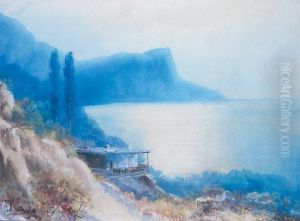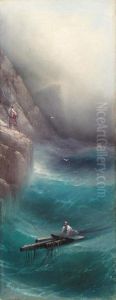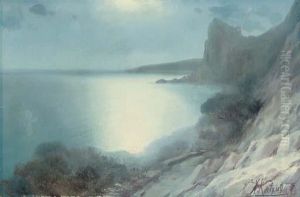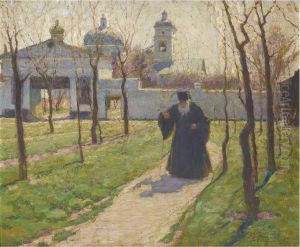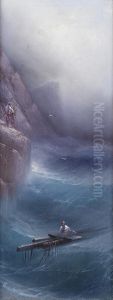Kiriak Konstantinov. Kostandi Paintings
Kiriak Konstantinov Kostandi was an eminent Russian and Ukrainian realist painter born on October 31, 1852, in the city of Odessa, which was then part of the Russian Empire and is now in Ukraine. Hailing from a Greek family that had settled in the region, Kostandi grew up in a multicultural port city, which had a significant influence on his later works.
Kostandi showed an early interest in art and was admitted to the Odessa Drawing School at the age of 13. He received his initial artistic training there under the tutelage of talented artists of the time. In 1872, he moved to Saint Petersburg and entered the Imperial Academy of Arts, where he studied under the guidance of well-known Russian painters such as Ivan Kramskoi and later under the mentorship of the famous Russian landscape painter, Ivan Shishkin.
Throughout his career, Kostandi became known for his landscape and genre paintings. His works were often characterized by a meticulous attention to detail and a profound love for the natural world, as well as a keen interest in the everyday lives of common people. Kostandi was a member of the Peredvizhniki (Wanderers or Itinerants) movement, a group of Russian realist artists who, in protest of academic restrictions, formed an artists' cooperative which evolved into the Society for Traveling Art Exhibitions in 1870.
After completing his education, Kostandi returned to Odessa in 1880 and became a significant figure in local art circles. He taught at the Odessa Art School for many years and influenced a generation of young artists. Kostandi was also a co-founder of the Society of South Russian Artists. His work was recognized in his time, and he was awarded the title of Academician by the Imperial Academy of Arts for his contributions to Russian art.
Kiriak Kostandi continued to paint and exhibit his works until his death on October 31, 1921. His legacy is preserved in the form of his paintings, which can be found in various museums and private collections, and through the influence he had on the development of Ukrainian and Russian art during a period of significant social and cultural change.
